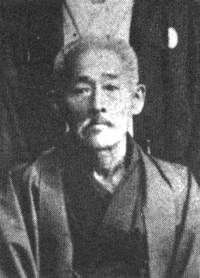
Higaonna Sensei was born in Naha-Shi Okinawa, in 1853 and was regarded as one of the most influential Karate instructors in Okinawan history. Higaonna Sensei was known for bringing the Chinese martial arts from China to Okinawa and is considered to have laid the foundations of the Goju-Ryu style through the amalgamation of the Naha-Te style with a form of Chinese boxing. Naha-Te was a pre World War II term for a type of Martial Art indigenous to the area around the Old Commercial city of the RyuKyu Kingdom called Naha and now the capital city of the island of Okinawa.
At the age of 10, he began helping his father in the family business. He was small for his age, but very quick and nimble, and showed a keen interest in the fighting arts at an early age. At the age of 14, late in the same year his father was killed in a violent street fight, he began his formal training in Chinese Kempo (Monk Fist Boxing) with Seisho Arakaki who had studied the Fukien style. The death of his father had a major impact on the Higaonna family, and not least upon the young Kanryo himself. He went through tremendous grief which after a time turned to anger and then a desire for revenge. He longed to travel to China and study there, and eventually achieved this aim in 1868 when he convinced the owner of a ship bound for China to grant him passage.
He sailed from Okinawa in 1868 at the age of 15 to the Fukien province in China. There he spent about 13 years training under a famous Chinese Kempo master named Ryu-Ryu Ko. It took almost a year for Higaonna to meet Ryu-Ryu Ko and even after Higaonna Sensei was introduced he was not immediately accepted as a disciple. The Chinese master took the time to study the personality and character of the candidate before accepting him as a disciple.
It is believed that he spent the first 5 or 6 years practicing Sanchin kata only, and was later taught Saifa, Seiyunchin, Shisochin, Sanseru, Sepei, Kururunfa, Seisan and Suparinpei. He was also trained in the use of several traditional weapons, and herbal medicine.
As a disciple, Higaonna Sensei would help his master at his trade as a bamboo craftsman by day and would then undertake his training sessions after dark. Training began with the practice of Sanchin, then lifting the Nigiri-game (heavy ceramic jars) by their rims to strengthen his grip while practicing Unsoku-ho (a pattern of stepping movements) to develop proper footing. Exercises continued using the Muchi-ishi (natural stone) and Makiwara (striking post) as well as an Uki (bamboo basket) where two persons would practice close fighting and choking techniques inside. These new tools and training techniques fascinated Higaonna Sense and increased his interest in karate even more. The harsh training took its toll, however, and his legs, hands and shoulders were always swollen from over exertion. Nevertheless, it was this harsh training that enabled him to develop his muscles like forged steel. After several years of harsh training, he became his master’s most skilful disciple.
Higaonna Sensei was noted for his powerful Sanchin kata. Legend has it that steam would rise up from the cold winter floors of his dojo due to the gripping of his feet onto the floor while doing the Sanchin kata. Higaonna Sensei would often invite his students to tie ropes around his legs in an attempt to move him while he was standing in the Sanchin stance. Reportedly no one could ever move him.
He returned to Okinawa during the middle of the Meiji Era around 1881 and introduced a new school of karate distinguished from other indigenous styles at the time by the integration of go-no(soft) kempo and ju-no (hard) Kempo into one system. His martial arts became known as Naha-Te. Through his own research and the experience of losing his father at an early age under violent circumstances, the Naha-te style was specifically tailored to develop the mind and body and to improve both the physical and spiritual well being.
In 1905 he began teaching at a public high school, and was considered to be the foremost karateka in Okinawa. He is responsible for developing the Naha-te style, and many of his students went on to form their own systems based on his teachings.
He died on December 23, 1915 at the age of 63. His legacy lived on through his followers, most notably through his best student Chojun Miyagi, the founder of Goju Ryu.
